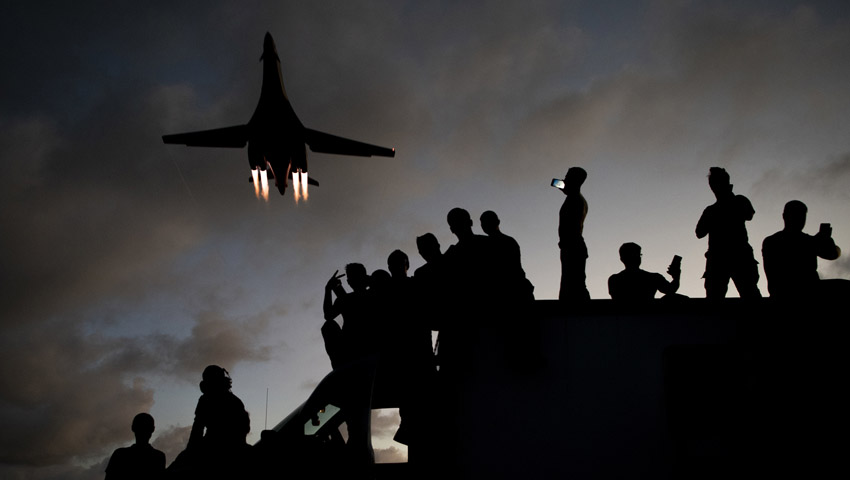An eight-year project to install the Integrated Battle Station, or IBS, on the US Air Force B-1B Lancer fleet has been completed ahead of schedule – 60 aircraft went through the modification process that began in late 2012 and was completed this month.
The Integrated Battle Station (IBS) was developed as three separate modifications: Fully Integrated Data Link, Vertical Situational Display Unit and Central Integrated Test System.
The IBS was the largest, most complicated modification ever performed on the B-1 and it gave the flight deck a whole new look.
William Barnes, B-1B Systems program manager, Air Force Life Cycle Management Center, explained, “During development, it became obvious that modifying the same aircraft three times would be detrimental to aircraft availability and would create numerous aircraft configurations. Thus Integrated Battle Station was born.”
To complete a modification of this size took thousands of man-hours of work. Rodney Shepard, 567th Aircraft Maintenance Squadron director, said with 120 maintainers assigned to the modification line working two shifts, completing all 60 aircraft over the past eight years came to 1,050,000 hours of planned work.
With this large of an undertaking, there was bound to be some difficulties along the way.
“With all new workload, the start of the modification line was slow, however, with enterprise buy-in and support, the modification line eventually reduced flow days and met 'Art of the Possible' goals,” Shepherd explained.
By the time the modification was completed, 987 aircraft availability days were returned to the warfighter.
The 567th AMXS’s dedication to continuous process improvement on the IBS modification line was a significant element in the unit winning the Robert T. Mason Award for Best Depot Level Maintenance Facility in 2017.
The completed modification will enhance B-1B flight operations and give the crews more flexibility in performing their various missions.
“All aircraft outfitted with the Integrated Battle Station modification enhancements provide the four members of the aircraft with much greater ’battlefield‘ awareness of surrounding threats whether those threats are air-to-air or ground-to-air, and provides a much faster capability to execute both defensive and offensive manoeuvres needed in any conflict,” Shepard said.
Lieutenant Colonel James Couch, 10th Flight Test Squadron commander, whose pilots and weapon system officers performed numerous check flights on the modified aircraft, echoed the sentiments.
“This upgrade drastically improves aircrew situational awareness with colour displays, and enhanced navigation and communication systems are projected to significantly enhance B-1B mission readiness,” Lt Col Couch said.
“Although this closes a chapter, this continues the unprecedented advances of B-1B lethality and aircrew situational awareness for decades to come. All of these benefits are made possible by the IBS upgrade.”
Colonel Greg Lowe, 76th Aircraft Maintenance Group commander, said IBS provides upgraded capability for communications and situational display, which is a tremendous advantage to the warfighters in Air Force Global Strike Command.
“Using the Air Force Sustainment Center’s constraints-based management system, known as ‘Art of the Possible’, the artisans of the 567th Aircraft Maintenance Squadron developed a repeatable process to efficiently install the modification on the aircraft,” Col Lowe said.
“The project employed 120 mechanics and support personnel at the Oklahoma City Air Logistics Complex for the past eight years. And while this mission is coming to an end, all of our employees will be diverted to other growing workload at Tinker (AFB).”
Air Force Global Strike Command (AFGSC) had high praise for the men and women at Tinker AFB who worked on the modification.
General Tim Ray, AFGSC commander, said, “Big thanks to the team at Tinker (AFB) for doing a remarkable job retooling the B-1 and getting it back in the fight.
“The work the B-1 and our Airmen are doing is a great example of how we’re making a huge impact on Dynamic Force Employment to support the National Defense Strategy. These modifications have revitalised the B-1 for the high-end fight, allowing our precision strike force to remain strategically predictable but operationally unpredictable.”


